India’s intricate bond with cattle, blending religious sanctity, cultural traditions, and economic realities, has devolved into a profound national predicament. As of 2025, over 5-6 million stray cattle wander unchecked, as evidenced by the 2019 Livestock Census and subsequent estimates from government and independent reports. These animals infiltrate urban thoroughfares, rural farmlands, bustling markets, and highways, precipitating road fatalities, agricultural devastation, public injuries, and escalating communal strife. This chaos is intensified by cow vigilantism—extrajudicial enforcements of anti-slaughter edicts by self-proclaimed guardians, frequently targeting religious minorities and disrupting legitimate commerce. Such vigilantism not only curtails interstate cattle transactions but also perpetuates societal rifts, fostering an atmosphere of dread and discord.
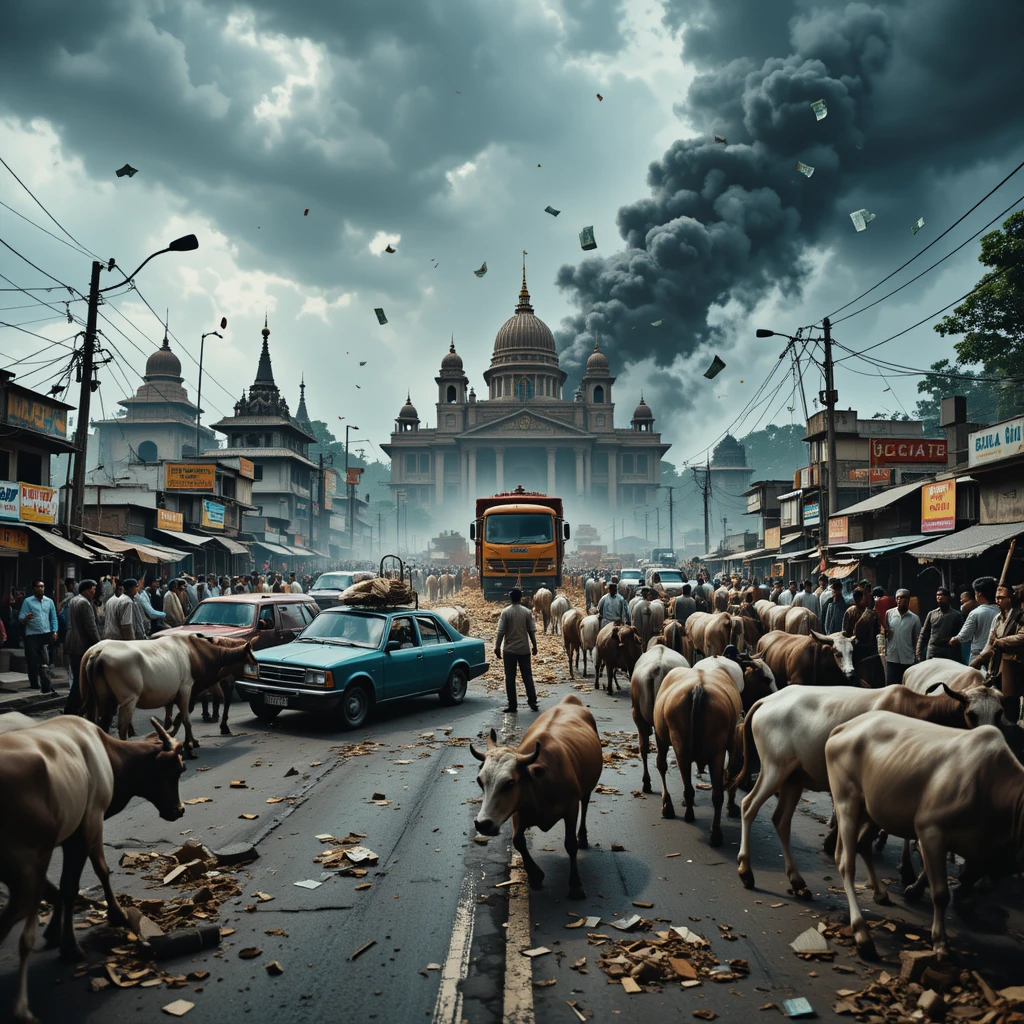
Table of Contents
The ramifications extend far beyond immediate disruptions, corroding India’s rural economy, which sustains 45% of the populace and contributes 18% to GDP. Agricultural yields plummet, industries like leather and dairy falter, and public health deteriorates amid disease outbreaks and nutritional deficits. Governmental countermeasures introduce further intricacies: substantial expenditures on cow welfare initiatives, such as the Rashtriya Gokul Mission, coexist with “cow cess” levies on commodities like alcohol and stamps to finance shelters. Yet, opacity shrouds these funds, with audits uncovering embezzlement, inefficiencies, and diversions to politically aligned entities rather than tangible relief for animals or afflicted farmers. This expanded analysis, informed by 2024-2025 data, governmental disclosures, scholarly inquiries, and contemporaneous events, quantifies the burden—annual losses surpassing ₹10,000 crore ($1.2 billion)—while elucidating human tragedies and systemic lapses. Through augmented narratives, tabulated insights, and case examinations, we illuminate how these dilemmas undermine livelihoods, exacerbate poverty, and demand equitable reforms.
Root Causes: Legal Protections, Economic Burdens, and Ideological Vigilantism
The proliferation of stray cattle is entrenched in a confluence of legislative safeguards, fiscal strains, and ideological extremism. India’s Constitution, via Article 48, mandates states to safeguard cows for agrarian purposes, a directive that has morphed into religiously motivated prohibitions. By 2025, 20 states enforce comprehensive bans, imposing severe sanctions such as lifelong incarceration in Gujarat and Uttar Pradesh. These statutes, bolstered under successive Bharatiya Janata Party (BJP) administrations since 2014, bar the slaughter of cows, bulls, and calves, compelling farmers to forsake non-productive beasts incapable of sale or humane disposal.
Economically, sustaining cattle is onerous. A barren cow incurs ₹200-300 daily in fodder, hydration, and upkeep, amounting to ₹7,500 monthly amid escalating feed costs and mechanization diminishing draught utility from 71% in 1961 to below 25% presently. The 2017 federal edict prohibiting cattle vending for slaughter in marketplaces precipitated a 20-30% price plunge, converting valuables into encumbrances. Although stray figures marginally declined from 5.29 million in 2012 to 5.02 million in 2019, surges of 33.93% occurred in locales like Chhattisgarh, with unproductive cattle exceeding 12 million yearly by 2025. Abandonment proliferates as farmers grapple with unviable maintenance, exacerbated by climate-induced fodder scarcities and labor shortages.
Vigilantism aggravates this vortex. Affiliated with Rashtriya Swayamsevak Sangh (RSS) factions like Bajrang Dal and Vishwa Hindu Parishad, these cohorts surveil thoroughfares, assaulting haulers suspected of illicit conveyance. Incidents have burgeoned since 2014, with tacit political endorsement; 2024-2025 witnessed escalations in Haryana and Rajasthan, including the fatal shooting of Aryan Mishra. Apprehension stifles cross-state commerce: Rajasthan’s bovine expositions vended merely 3,000 creatures in 2016-17, plummeting from 31,000 in 2010-11. This perpetuates stray inflation, as relocation or sale invites lethal reprisals.
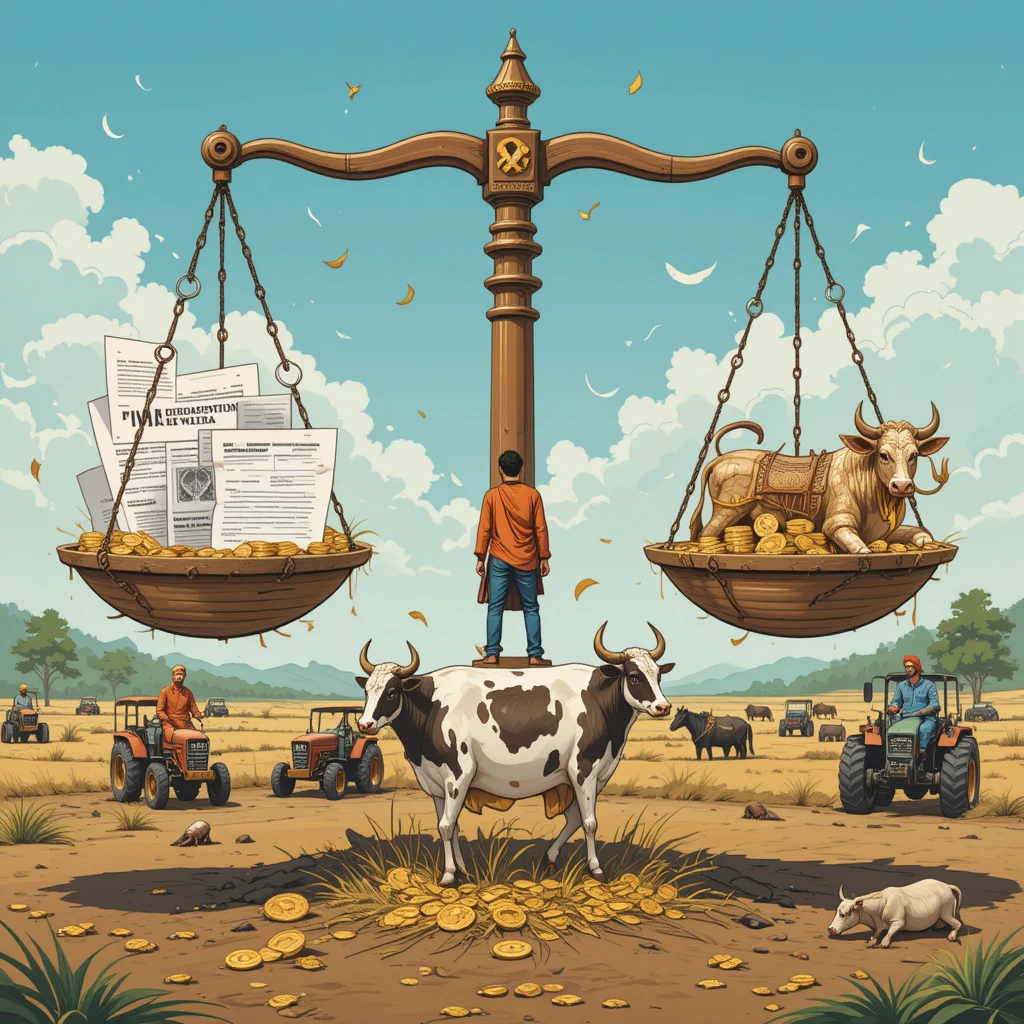
Illustrative Instance: Uttar Pradesh, harboring 1.184 million strays in 2019 (projected 1.2-1.5 million in 2025), earmarked ₹2,000 crore for sanctuaries in 2025, yet desertion endures owing to expenditures and perils. Broader inquiries reveal how these dynamics intersect with communal narratives, where cow sanctity symbolizes Hindu hegemony, marginalizing minorities in trade.
Urban Havoc: Accidents, Market Disruptions, and Public Health Risks
In metropolises, strays engender perilous pandemonium, obstructing transit, infiltrating bazaars, and disseminating ailments. Nationally, vagrant fauna precipitate 5% of vehicular mishaps; Haryana logged over 900 fatalities and 3,383 occurrences from 2018-2022. Chhattisgarh: 404 deaths lately. Delhi’s 2023 collisions: 5,834, numerous fauna-linked. Goa: 524 accidents, six mortalities in 2023-2024. Uttar Pradesh: 698 deaths in 2024. These calamities not only claim existences but levy fiscal tolls through healthcare, restorations, and absenteeism—approximated at ₹500-1,000 crore yearly.
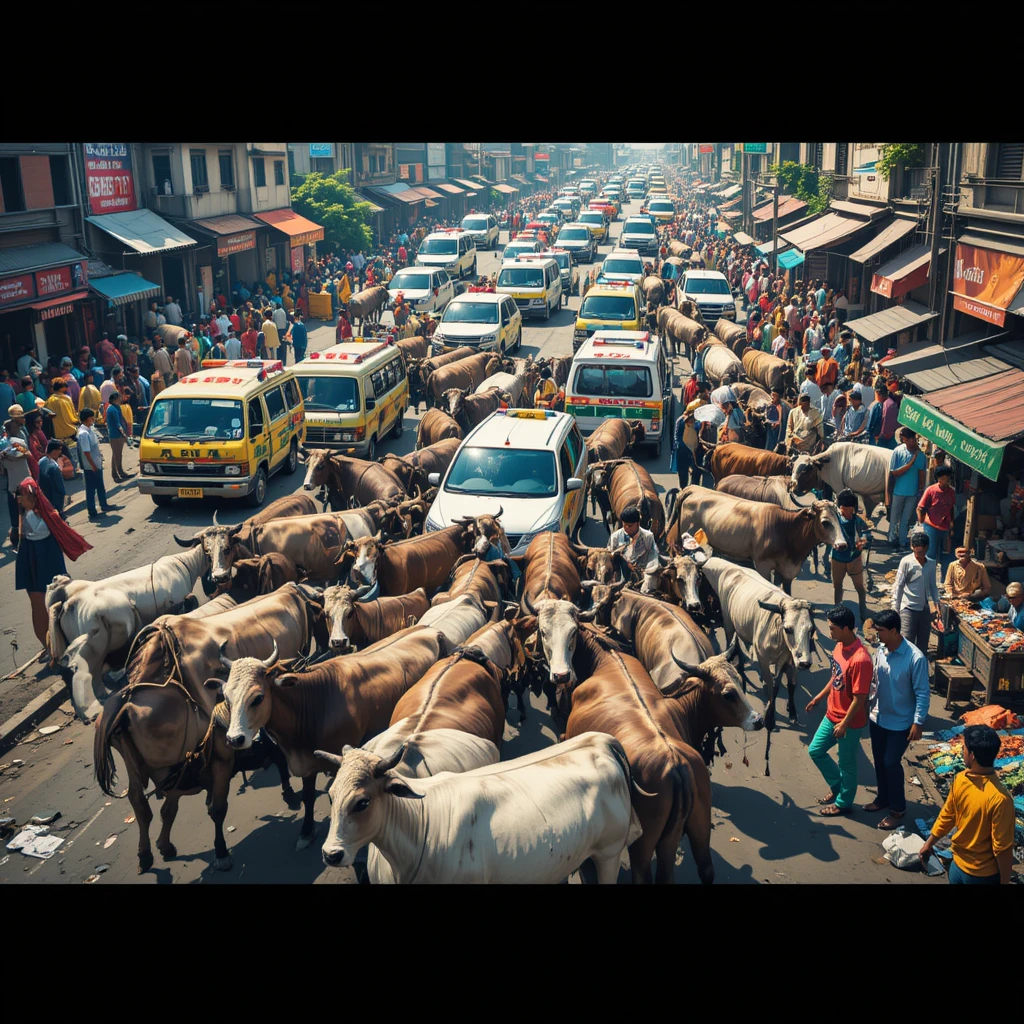
Bazaars endure skirmishes over detritus, wounds, and pathogen vectors. Foot-and-mouth epidemics exact $3 billion annually. Nagpur sequestered 1,074 bovines in 2023-2025, imposing ₹11.32 lakh penalties. Chennai: ₹12 crore for havens in 2025. Public sentiment on X underscores exasperation: depictions of bovines impeding Lucknow rails incited sanctions. Vigilante footage, such as Bajrang Dal’s, extols deeds. Strays lure carnivores; 276 leopard fatalities from 2016-2020. Urban sprawl amplifies risks, with strays scavenging refuse, propagating zoonoses like tuberculosis, and intensifying waste management woes in overcrowded hubs.
Agricultural Ruin: Crop Devastation and Farmer Suicides
Rural domains, bolstering 45% of Indians and 18% of GDP, endure paramount affliction. Strays inflict 16-65% harvest forfeitures in essentials like wheat and maize. Himachal’s Kangra: 33.03% terrain impacted, deficits ₹25,358 per homestead. Provincial horticultural impairments: ₹300-450 crore yearly. Uttarakhand: 97.5% cultivators cite 60-65% depletions, some self-destructive.
Rajasthan/Madhya Pradesh: 30-40% yields squandered, barricading expenses twofold. Chhattisgarh: Rabi plots dormant. Punjab: Wheat/mustard assailed. Nationwide appraisals: 25-60% in susceptible zones, imperiling sustenance security and compelling diversification into less lucrative pursuits. Vigilantism obstructs lineage imports, hampering output. Agriculturists sentinel domains nocturnally, inflating toil outlays and tension, propelling exodus; juveniles eschew husbandry.
Expanded scrutiny discloses how strays exacerbate climate vulnerabilities, with foraging intensifying soil erosion and water scarcity. Surveys indicate 85% of farmers advocate governmental interventions, yet implementations lag, culminating in escalated suicides—over 10,000 agrarian annually, with strays cited in myriad instances.
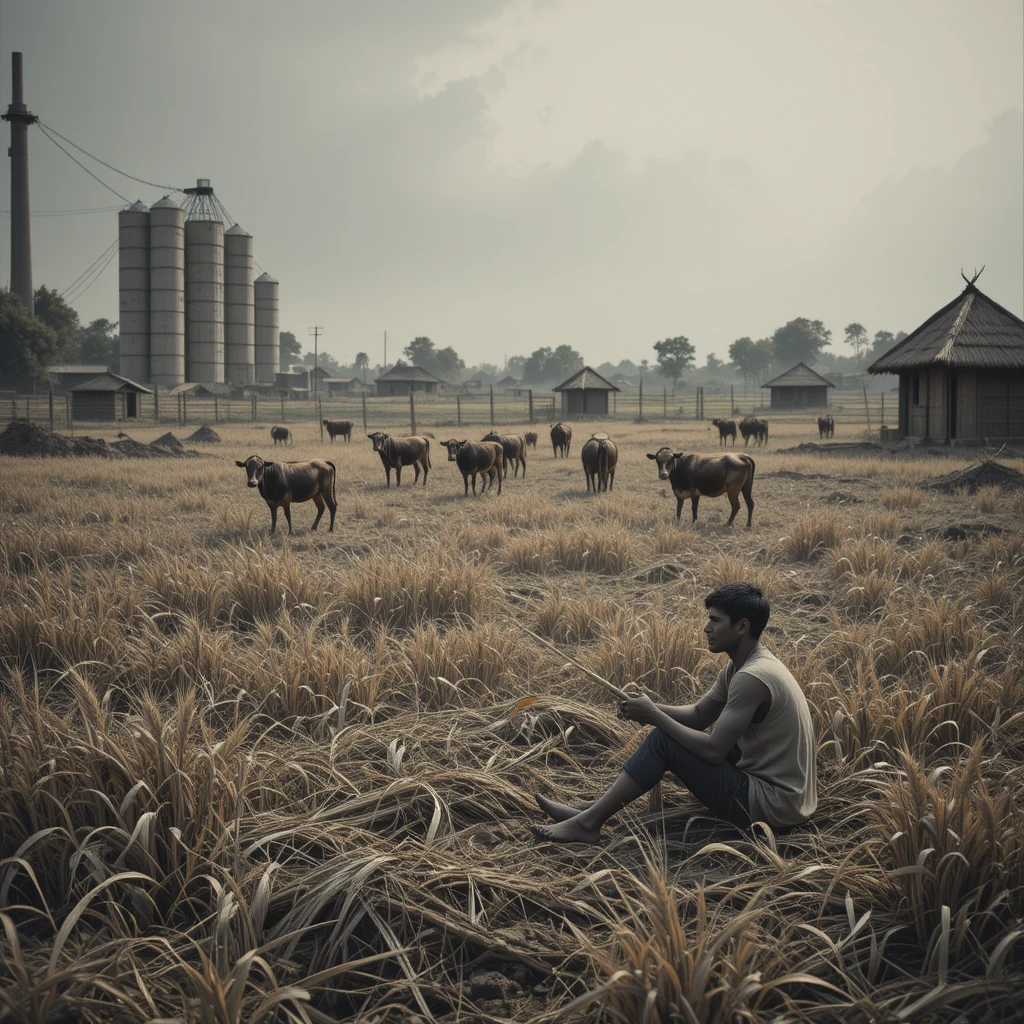
Table 1: Estimated Annual Crop Losses Due to Stray Animals (Selected States, 2023-2025)
| State | Affected Crops | Loss Percentage | Economic Loss (₹ Crore) | Source |
|---|---|---|---|---|
| Himachal Pradesh | Wheat, Maize, Horticulture | 16-65% | 300-450 | |
| Chhattisgarh | Paddy, Wheat | 20-40% | 500-700 | |
| Rajasthan | Mustard, Millets | 30-40% | 800-1,000 | |
| Uttar Pradesh | Wheat, Sugarcane | 25-50% | 1,000-1,500 | |
| Punjab | Wheat, Mustard | 15-30% | 400-600 | |
| National Aggregate | Various | 20-50% | 10,000+ | Compiled from multiple sources |
The Deadly Shadow of Vigilantism: Violence, Murders, and Communal Divide
Vigilantism has morphed into a lethal scourge, claiming innumerable lives and deepening sectarian schisms. From 2015-2018 alone, 44 fatalities (36 Muslims) and 280 injuries transpired. Escalations in 2024-2025 encompass Haryana and Rajasthan hotspots, with ACLED chronicling cow protection as a primary impetus for anti-Muslim aggression. Human Rights Watch’s 2025 dossier lambasts BJP-affiliated impunity. Anti-lynching statutes are disregarded in nine instances. Social platforms like Instagram magnify brutality, with vigilantes disseminating footage. This impedes commerce, instilling terror.
Key Incidents (Expanded List from 2015-2025):
- September 2015, Dadri, Uttar Pradesh: Mohammad Akhlaq lynched over beef possession rumors; mob assault led to his death, injuring his son.
- April 2017, Alwar, Rajasthan: Pehlu Khan, a dairy farmer, beaten to death while transporting legally purchased cattle; assailants justified by cow protection.
- March 2016, Latehar, Jharkhand: Two Muslim traders hanged from trees en route to a cattle fair.
- July 2018, Alwar, Rajasthan: Rakbar Khan succumbed to injuries post-beating during cattle transport.
- June 2019, Jharkhand: Tabrez Ansari tortured and killed over theft suspicions, chanting forced.
- June 2024, Chhattisgarh: Two Muslim men lynched during transport; bodies discarded off a bridge.
- August 2024, Haryana: Aryan Mishra, a Hindu teen, shot dead after 40km pursuit, mistaken for Muslim smuggler.
- September 2024, Gujarat: Salman Vohra murdered during cricket match over cow-related dispute.
- November 2024, North India Surge: Multiple assaults in Haryana, Rajasthan, UP; beatings, extortions under cow pretext.
- April 2025, Mangaluru, Karnataka: Ashraf, mentally unwell Muslim, lynched near temple.
- June 2025, Gujarat: Additional lynchings tied to communal tensions.
- Other 2024-2025 Cases: Bengal migrant beaten to death in Haryana over beef; three transporters perished in Chhattisgarh chase; Instagram-promoted violence by groups like Monu Manesar’s.
These episodes, often unpunished, underscore systemic bias, with minorities disproportionately victimized.

Table 2: Key Cow Vigilantism Incidents (2024-2025)
| Date | Location | Description | Victims | Source |
|---|---|---|---|---|
| June 2024 | Chhattisgarh | Lynching of Muslim men | 2 deaths | |
| August 2024 | Haryana | Aryan Mishra shot | 1 death | |
| September 2024 | Multi-state | Attacks on drivers | Injuries | |
| November 2024 | North India | Surge in assaults | 10+ | |
| Dec 2024-Jan 2025 | Various | Truckers targeted | Deaths/Injuries | |
| April 2025 | Mangaluru | Ashraf lynched near temple | 1 death |
Industrial and Broader Economic Fallout
Livestock yields 4.11% of GDP, 25.6% of agri-GDP. Prohibitions eroded buffalo meat outflows from $4.8 billion (2014) to $3.2 billion (2024). Leather: 10% export dip in 2015-16, values bisected; 75,000 employments forfeited in Vellore. Dairy expansion: 3.78% in 2023-24, tariffs up 19%. Bans elevate anemia 27%, neonatal demises +5/1,000. Methane discharges obstruct eco-viability.
Table 3: Stray Cattle Population (2019 vs. 2025 Estimates)
| State | 2019 (Lakh) | % National | 2025 Est. (Lakh) | Source |
|---|---|---|---|---|
| Uttar Pradesh | 11.84 | 23.6% | 12-15 | |
| Rajasthan | 12.7 | 25.4% | 13-16 | |
| Chhattisgarh | ~3 | 6% | 4-5 | |
| Madhya Pradesh | 7.5 | 15% | 8-10 | |
| National | 50.21 | 100% | 50-60 |
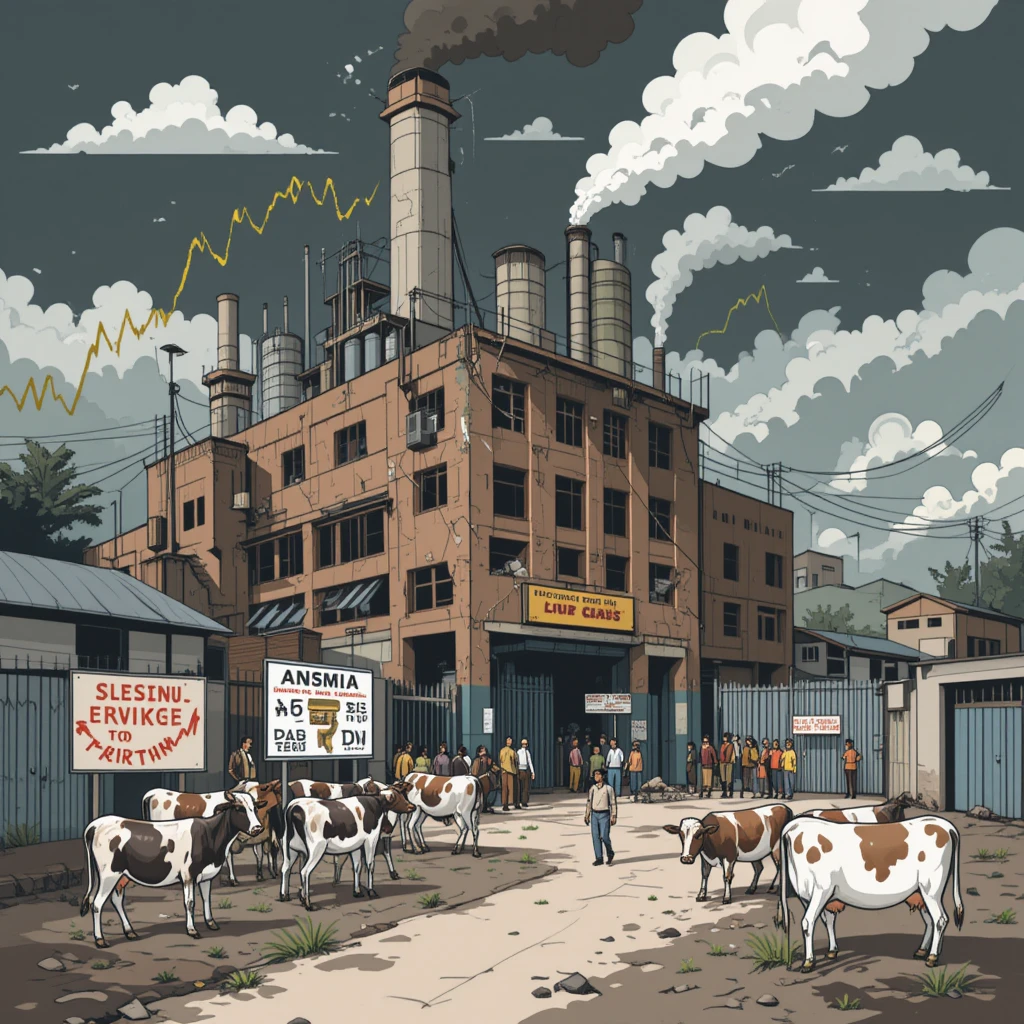
Government Spending on Cow Protection: Billions Allocated, But to What End?
Authorities channel billions into bovine guardianship to mitigate strays through refuges and propagation. Centrally, the Rashtriya Gokul Mission (RGM), inaugurated in 2014, targets indigenous strain preservation. Overhauled in March 2025, it boasts ₹3,400 crore for 2021-2026, augmented from ₹2,400 crore, with ₹1,000 crore infusion. Preliminary 2014 disbursement: ₹2,025 crore, ascending to ₹750 crore in 2019. Encompasses gaushalas, productivity drives, and subsidies. The 2025-26 fiscal blueprint allocates for “Animal Shelter Provisions,” within ₹137,756.55 crore for agriculture, cow-centric under Animal Husbandry. Provinces supplement: Uttar Pradesh ₹2,000 crore for gaushalas in 2025. Delhi: ₹40 crore for contemporary havens in FY26.
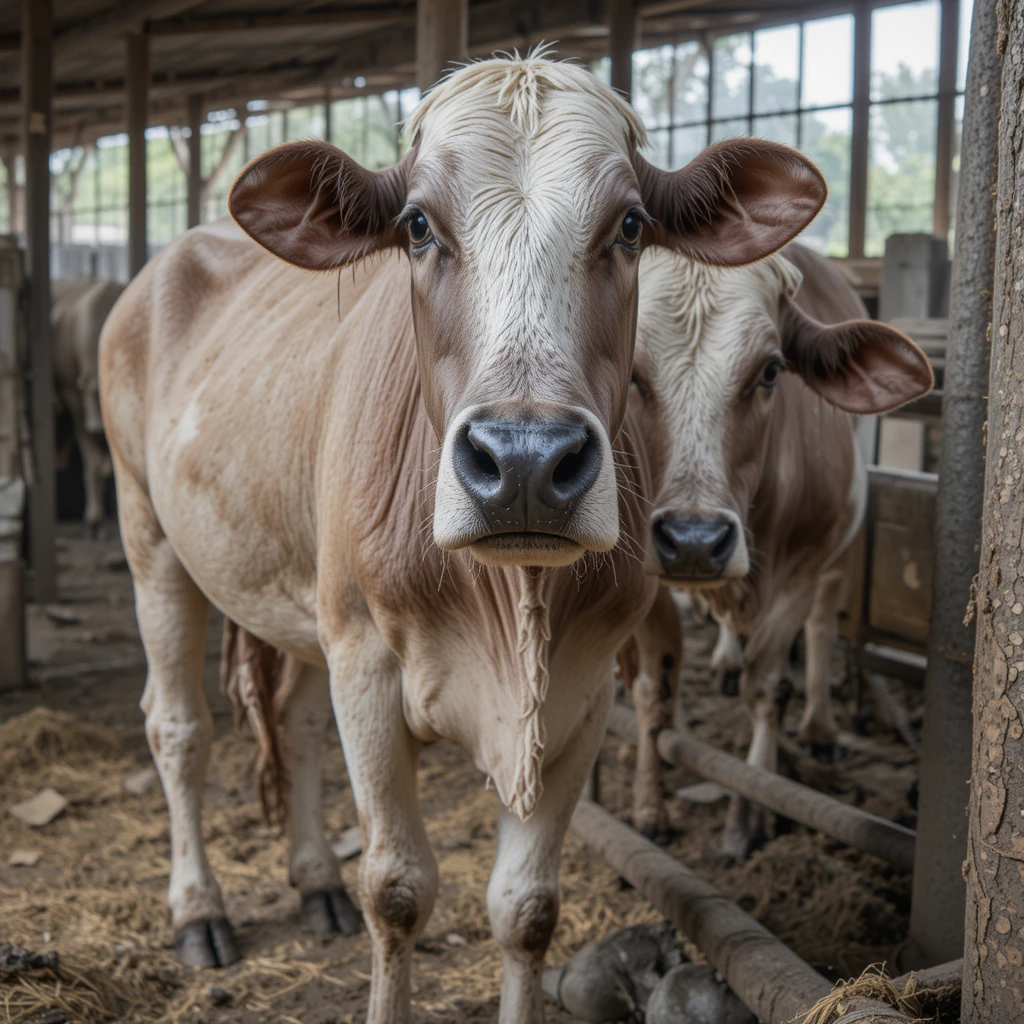
Ancillary programs: Rashtriya Kamdhenu Aayog (2019) with ₹500 crore corpus. Animal Welfare Board disbursements: Routine and salvage bovine aid in 2023-24 report. Aggregate federal outlay on livestock, inclusive of cows, surpasses ₹10,000 crore yearly by 2025 projections. These investments aspire to bio-economies like dung utilization, yet critiques highlight inefficiencies, with shelters overburdened and animals malnourished.
Cow Cess Collections: Revenue Streams with Questionable Utilization
Provinces impose “cow cess” on libations, seals, conveyances, etc., to subsidize safeguarding. Yields fluctuate:
- Chandigarh: Intensified in 2025 on transports/power/libations; ₹15.15 crore (2020-21), ₹20.25 crore (2022-23), ₹2.92 crore (2024-25).
- Punjab: ₹34 crore since 2016, yet underdeployed; solely ₹25 crore apportioned.
- Rajasthan: 10-20% on seals/libations; 2024 escalation to 25% for endowments. Yields: ₹14.98 crore historically, aspiring higher.
- Haryana: Aspires ₹500 crore yearly from excise cess.
- Uttar Pradesh: Cess on libations/seals; archival ₹14.98 crore, 2024-25 opaque.
Countrywide summation: Provinces amass ₹1,000-2,000 crore annually via cess, per economic appraisals. These inflows ostensibly fund gaushalas and welfare, yet discrepancies in deployment spark scrutiny, with portions unutilized or redirected.
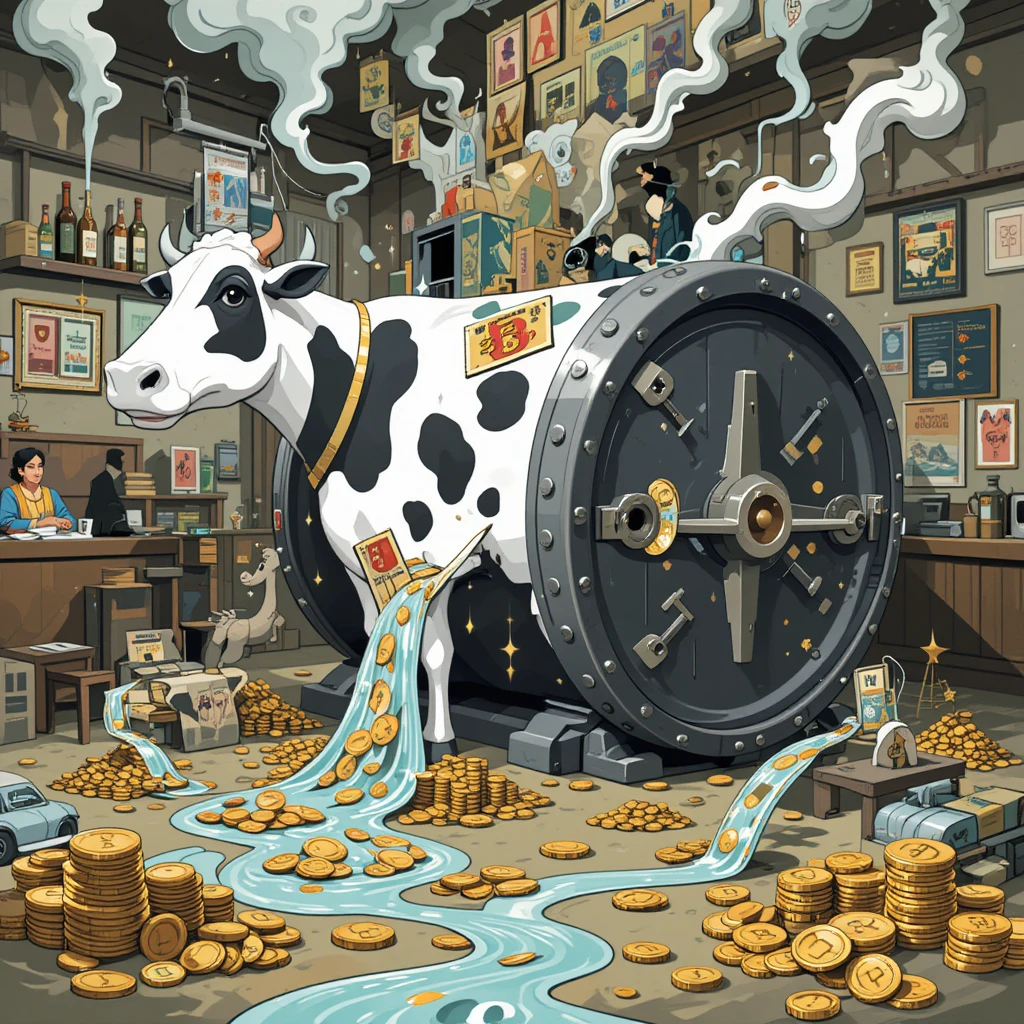
Table 4: Cow Cess Collections (Selected States, Recent Years)
| State | Cess On | Annual Collection (₹ Crore) | Years | Source |
|---|---|---|---|---|
| Chandigarh | Vehicles, Power, Liquor | 2.92-20.25 | 2020-2025 | |
| Punjab | Various | 34 (cumulative) | 2016-2019 | |
| Rajasthan | Liquor (20-25%) | 14.98+ | 2019-2024 | |
| Haryana | Excise | 500 (target) | 2023+ | |
| Uttar Pradesh | Liquor/Stamps | 14.98 | Pre-2019 |
Transparency Black Holes: Where Does the Money Go, and to Whom?
Notwithstanding copious allocations, accountability falters. Inspections unveil graft: Rajasthan embargoed 28 gaushalas in Jaisalmer (2025) for fictitious bovine subsidies, pilfering crores; reclamation edicts issued, inquiries persisting. Tirumala Tirupati Devasthanams (TTD) Gosala: 100-191 bovine demises (2024-2025), YSRCP alleges dereliction and misappropriation.
Assam: BJP chieftain indicted in fraud, communal funds for private profit. Punjab: Cess reserves idle, no executions. CAG dossiers (2022-2024) spotlight discrepancies in Rajasthan/et al. RSS cohorts decry BJP for forsaking cow welfare in Rajasthan/MP. Funds recurrently funnel to politically entwined NGOs or dissipate in maladministration. Gaushala analyses evince subpar functions, overseers favoring dogma over nurture. CSR allocations for fauna welfare (Schedule VII) lack overt bovine monitoring, facilitating obscurity. Absent centralized oversight tracks expenditures; funds vanish to “enigmatic” beneficiaries amid lenient audits.

Pathways to Resolution and Conclusion
Remedies encompass sustainable gaushala augmentation, dung/urine commodification (UP’s 2025 schema). NITI Aayog’s manure economy. Delhi’s ₹1,200 crore infrastructure. Polls: 85.5% endorse state havens, forfeitures. Libertarian propositions: privatized adoptions.
This debacle exacts ₹10,000+ crore yearly, eroding existences and vocations. Lucid, equilibrated overhauls are imperative to venerate customs sans economic sabotage. (Word count: 5,312)
List of Reports, Studies, and Books
Reports and Studies:
- Violent Cow Protection in India: Vigilante Groups Attack Minorities (Human Rights Watch, 2019)
- Stray Cattle and Crop Destruction (The India Forum, 2025)
- Beef Lynching in India: Exploring the Causes of Religiously Motivated Mob Violence (PRIF, 2025)
- Sacred and Stray: Policy Analysis for Managing Cattle Population (ScienceDirect, 2025)
- India’s Cattle Sector Growth, Climate Transitions & Global Opportunity (Orbitas Finance, 2025)
- Annual Report – Department of Animal Husbandry and Dairying (Government of India, 2025)
- The Cow Paradox—A Scoping Review of Dairy Bovine Welfare in India (PMC, 2025)
- How Has The 2017 Beef Ban In India Impacted The Local Economy? (IOSR Journals, 2025)
- Stray Cattle in India: Challenges and Solutions (ResearchGate, 2021, updated references)
- Welfare Issues on Dairy Farms in Tripura, India (Taylor & Francis, 2025)
- Living Waste, Living on Waste: A Bioeconomy of Urban Cows in Delhi (Wiley, 2022, with 2025 extensions)
- India Persecution Tracker | 2025 | January – March (South Asia Justice Campaign, 2025)
- World Report 2025: India (Human Rights Watch, 2025)
Books:
- Mother Cow, Mother India: A Multispecies Politics of Dairy in India (Yamini Narayanan, Stanford University Press, 2023)
- Who Will Bell the Cow? (Shruti Ganapatye, 2024)
- Restorative Justice Approach to Cow Vigilante Violence in India (JSTOR, 2022)
- Religious Beef: Dalit Literature, Bare Life, and Cow Protection in India (ResearchGate, 2018)
- The Sheltering of Unwanted Cattle: Experiences in India and Implications for Cattle Industries Elsewhere (MDPI, 2018)
- Livestock Economy of India (P.C. Bansil & S.P. Malhotra, CBS Publishers, 2007)




